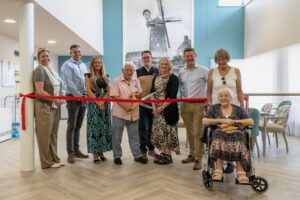Whilst visiting New York last week I took a trip to the High Line. The High Line is a public park in Manhattan, developed from a disused railway originally constructed in the 1930s to lift freight trains off the streets. With freight on the line coming to an end in 1980, it is has since been transformed into a well designed urban oasis and acts as an inspiration for all of us concerned with creating and preserving green spaces, at a time when they are increasingly under threat.
Many working in the environmental regeneration field have long recognised the benefits of green spaces for improving well-being and quality of life.
This evidence base has further been strengthened by the recently launched findings of the National Ecosystem Assessment (NEA). This highlights in particular the economic benefits of the UK’s parks, lakes, forests and wildlife. For example, the health benefits of just living near to green space are valued at £300 per person per day by the report.
Similarly, research has shown that preserving public space, including green space, is crucial for stimulating social action, developing people’s skills, and realising the coalition government’s vision for the Big Society (see recent CLES research with Groundwork).
Despite findings such as these, communities throughout the country will need to work harder than ever to secure the future of green spaces in their locality.
The vast majority of local councils – as high as 82% according to a recent GreenSpace survey – are facing budget cuts to their parks and green space teams. Many of these are experiencing reductions at disproportionately high levels compared to other council services.
Meanwhile the government seems intent on turning our natural environment into a commodity to be traded to the highest bidder. The recent attempt to sell off our forests, before the groundswell of public outrage forced a u-turn, is one example. The proposal by Communities Secretary Eric Pickles to abolish the rules that ensure councils provide allotments is another. This comes at a time when there is clear demand for local food production, with allotment waiting lists oversubscribed across the country and vegetable seeds now outselling flower seeds in the UK for the first time since the Second World War.
Returning to New York, the transformation of the industrial railway structure into a public park was a project initiated and led by the community. Under the threat of demolition, and with Mayor Rudolph Giuliani poised to tear it down throughout the 1990s, two residents decided to take action. In 1999 community based non-profit group, Friends of the High Line, was formed. The group worked to safeguard the future of the historic structure and subsequently secured funding from the city authority and other sources to transform it into an elevated public park, opening in June 2009. They are now responsible for its maintenance and for generating 70% of its annual operating budget. The park’s design is innovative and creative. Many of the original train tracks have been kept, set into portions of the walkway and landscape, and there are 210 plant species including many wildflowers, tall grasses and reeds. This June a second section is opening, extending the park another half a mile.
Similar examples of positive action by communities are to be found in the UK of course. As I write, a neglected area of land near London’s Waterloo station is being transformed, with the commitment of volunteers, into an Urban Physic Garden. With a focus on plants with medicinal properties the garden will also act as a venue for events, talks and a place for social interaction for London’s diverse communities.
Front-loading spending cuts onto local authorities so that they have to either sell land to developers or radically scale back the upkeep of parks and green spaces is a far cry from the localism many of us would like to see pursued. But given this is the direction in which we are likely to be heading, the challenge is clear as Groundwork’s Tony Hawkhead identifies in a recent article for this website: ‘now, more than ever, we need to find creative ways of protecting and preserving these much loved spaces in the face of increasing budgetary pressures.’
Community action will become increasingly important. This is not only in terms of communities playing a greater role in the development and maintenance of green spaces but, crucially, for exerting political pressure.
If you care about a green space in your local community, best to speak out and take action now, before it is too late.

















Couldn’t agree more, and there is a real ground swell of local activity happening around reusing empty spaces for producing food etc in a creative way. See http://tinyurl.com/6jd5yld
and http://ierossendale.ning.com/ as examples.